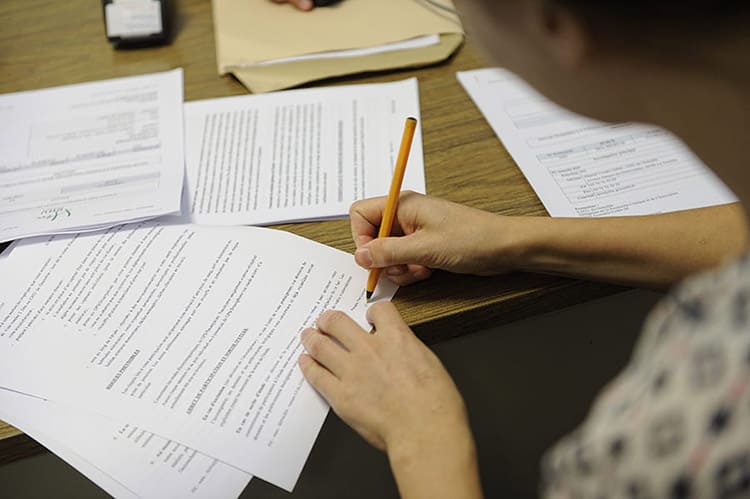Aims and follow-up
The study has three main objectives:
- characterize in detail exposure to ubiquitous environmental factors during pregnancy and early life,
- understand how exposure to pollutants can alter certain biological mechanisms,
- study how these pollutants affect respiratory health, growth, and child development.
The following main environmental factors are studied in the SEPAGES cohort:
Air pollution, notably particles in the air we breathe: this includes nitrogen dioxide (NO2) and fine particulate matter (PM2.5, PM10) from road traffic and urban heating, as well as volatile organic compounds (such as toluene, a known carcinogen still present in some oil-based paints).
Chemical pollution: essentially the large family of endocrine disruptors (molecules that influence hormone secretion) that are present in food packaging, cosmetics, household products, etc. This includes, for example, bisphenol A and substitute substances, and parabens or other phthalates.
Weather conditions: This includes ambient temperature and humidity.
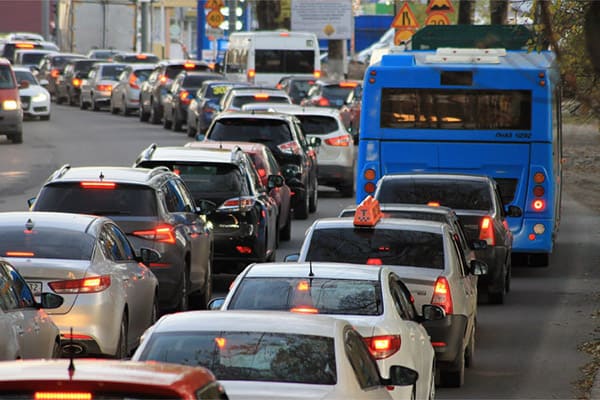
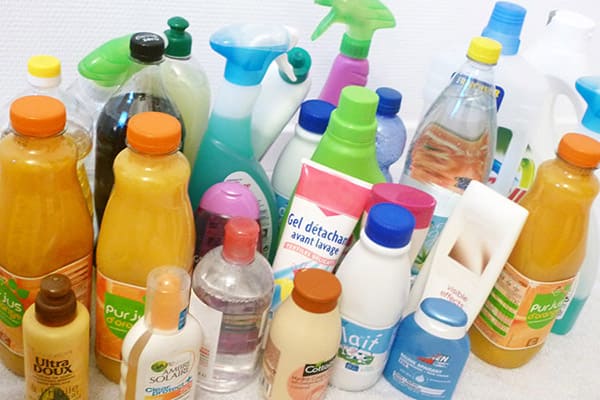
The following main health events are studied in the SEPAGES cohort:
Growth: data were collected from ultrasound data, clinical measurements (weight, height, head circumference, skinfolds), and repeated questionnaires.
Respiratory Health: data were collected from clinical examinations undertaken as early as two months of age and from repeated questionnaires
Child development: data were collected from a clinical examination of three-year-old children conducted by a neuropsychologist and from repeated standardized questionnaires.
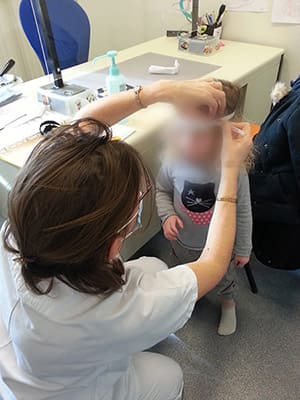

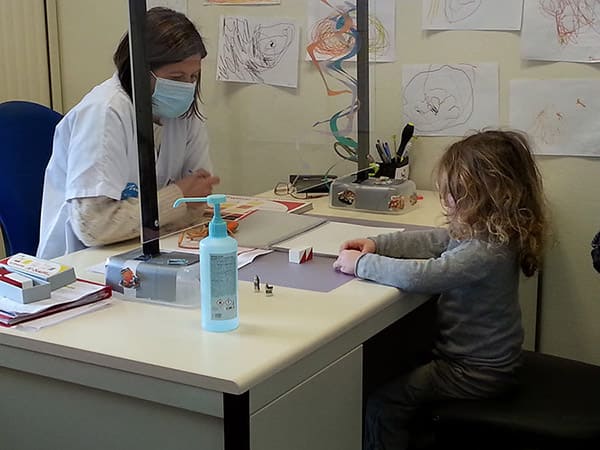
Couples were included in the SEPAGES study in their first trimester of pregnancy (or at the very beginning of their second trimester) and were followed until the birth of the child. The child was then followed until at least the age of ten.
Throughout the study (i.e., during the pregnancy and the first years of life), clinical examinations were carried out and numerous biological samples were collected (urine, blood, hair, stool, nails, teeth, and oral and nasal cells). Personal dosimeters, GPS, and accelerometers were used to measure the volunteers’ exposure to various environmental factors at several points during the pregnancy and in the early years of the child’s life.
At birth, various samples were collected (placenta, tissue, blood, urine, hair, meconium, and milk). To better understand the environment in which the volunteers lived, numerous questionnaires were digitally (self-)administered throughout the study.
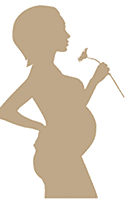
Pregnant women
Trimester 1
- - Measurement week
- - Clinical exam
- - Biological samples
- - Questionnaires
Trimester 3
- - Measurement week
- - Clinical exam
- - Biological samples
- - Questionnaires
Delivery
- - Biological samples

Birth
- - Clinical exam
- - Biological samples

Two months
- - Measurement week
- - Clinical exam
- - Biological samples
- - Questionnaires

1 year
- - Measurement week
- - Clinical exam
- - Biological samples
- - Questionnaires

2 years
- - Clinical exam
- - Biological samples
- - Questionnaires

3 years
- - Measurement week
- - Clinical exam
- - Biological samples
- - Questionnaires
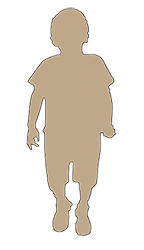
5 years
- - Biological samples
- - Questionnaires

8 years
- - Measurement week
- - Clinical exam
- - Biological samples
- - Questionnaires

9 years
- - MRI
-

Pregnancy
Volunteers were included in the study at the end of their first trimester of pregnancy. During the inclusion visit, the study staff administered health-history questionnaires and made a clinical examination consisting of anthropometric measurements (weight, height, etc.). During the pregnancy, the volunteer made several measurements over the course of two to three weeks, during which she carried pollution sensors, collected three urine samples per day, and filled in a diary. At the end of each week of measurements, the volunteer was clinically examined (weight, blood pressure); at the end of the first week, blood was withdrawn, and an electrocardiogram was performed. Throughout the pregnancy, the volunteer filled in questionnaires about her environment and health.
-

Partners
The pregnant woman’s partner is also included in the study. During the father’s inclusion visit, the study staff administered health-history questionnaires and made a clinical examination consisting of anthropometric (weight, height, etc.), cardiac (electrocardiogram and blood pressure), and respiratory (examination of respiratory function and skin tests) measurements. Samples, including blood, hair, and urine, were also collected. The partner also filled in questionnaires about his environment and health
-

Delivery, birth
At the time of delivery, maternity staff collected pieces of placenta, cord blood, and meconium. In the days following delivery, urine from both mother and child was collected as well as breast milk and hair. An additional drop of blood was also collected on Guthrie cards. In addition, on the third day of life, the maternity staff carried out a specific examination for the SEPAGES study (weight, height, hypospadias).
-

Two months
A new week of measurements was undertaken during which pollution sensors accompanied the child through daily displacements and at home, and the parents collected one urine sample per day and one stool sample. In addition, the parents filled in a diary and three 24-hour diet records, and the study staff conducted clinical examinations that included measurements of growth, blood pressure, and respiratory function (using the Lung Clearance Index).
-

1 year
A week of measurements was undertaken during which pollution sensors accompanied the child through daily displacements and at home, and the parents collected one urine sample per day and one stool sample. The parents also filled in a diary and three 24-hour diet records, and the study staff conducted clinical examinations that included measurements of growth and blood pressure. In addition, blood was drawn, and oral cells were collected. During the first year of life, the parents also filled in questionnaires regarding the child’s environment and health.
-

2 years
The child’s father or mother was interviewed by the study staff via telephone. The questions concerned the child’s environment and health and also included standard questions to obtain information about the child’s development. A subset of children was also examined at the BabyLab (Grenoble Center for Infant and Young Child Studies).
-

3 years
A week of measurements was undertaken during which pollution sensors accompanied the child through daily displacements and at home, and the parents collected two urine samples per day, one stool sample, and nail samples. The parents also filled in a diary and three 24-hour diet records. A clinical examination was performed in which growth and blood pressure were recorded, the respiratory function was measured using the technique of forced oscillations, and skin tests were done. The child was also seen by a neuropsychologist who administered the Wechsler Preschool and Primary Scale of Intelligence (WPPSI-IV). Finally, blood was drawn, and oral and nasal cells were collected.
-

5 years
The child’s father or mother was interviewed by the study staff via telephone. The questionnaires concerned the child’s environment and health and also included standardized questionnaires to obtain information about the child’s development. In addition, a hair sample was collected by the parents and the parents were sent a kit to collect and return three baby teeth (once the teeth had fallen).
-

8 years
A week of measurement is carried out during which pollution sensors accompain the child through daily displacements and at home, the child collects two urine samples per day, one stool sample and nail smaples. In addition, the parents fill out an application on the places frequented by the child and the care products, cleaning products, etc. used at home. A clinical examination is carried out with computer tests, growth measurements, blood pressure measurements, skin tests, retinography, a measurement of respiratory function using the forced oscillation technique (FOT) and lung function test. Finally blood, nasal secretions and saliva are collected.
Brochure for children -

As with all biomedical research studies, volunteers signed a consent form before being included in the study. The study received a favorable opinion from the Committee for the Protection of Persons (CPP South-East) and the approval of the National Commission for Information Technology and Liberties (CNIL). Participation in the study posed no risk to the health of the volunteers or of their children.
A complex procedure ensures a high level of data security. A 13-character identification code was generated for each questionnaire, biological sample, health datum, and exposure datum. Thus, for a given volunteer, each type of information collected has a different identification code. Each volunteer has between 100 and 200 different codes.
At any time during the study, volunteers may withdraw their consent and dropped out of the study. They may also accept only part of the protocol and, for example, refuse a sampling. Nevertheless, the research team needs to have the maximum data possible on a large number of couples and children to accurately answer their scientific questions. Finally, the clinical examinations of the SEPAGES study were noninvasive and posed no risk to the health of the volunteers.
